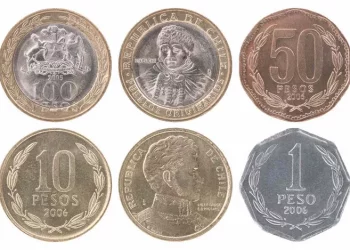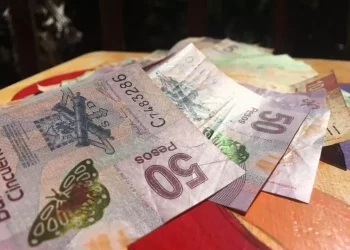The world of numismatics, the study or collection of currency, has long captivated people who have a passion for history, economics, and rare items. Coins, in particular, offer a fascinating window into the culture, economy, and history of different countries. Among the many coins that circulate in the Philippines, the 50 peso coin stands out as an intriguing subject for collectors, investors, and those simply interested in the rarities of everyday currency.
Though many people are familiar with the 50 peso coin as part of daily transactions, not everyone knows about its rarity or significance. Some might think that all 50 peso coins are of equal value and common in circulation, but this is far from the case. In fact, various factors affect the rarity of these coins, including the year of minting, the minting process, and how the coins were distributed or preserved over time.
In this article, we will delve into the factors that determine how rare a 50 peso coin can be, examine some notable issues surrounding these coins, and explore the financial implications for collectors and investors alike. We will also discuss the potential for these coins to appreciate in value and what one should look for if interested in adding a 50 peso coin to their collection.
Understanding the 50 Peso Coin
The 50 peso coin in the Philippines is part of the country’s national currency system and is officially recognized by the Bangko Sentral ng Pilipinas (BSP). It is a large denomination coin with a distinctive design, typically featuring prominent national symbols and historical figures. The coin is composed of a mix of metals, which helps ensure its durability and value for years of circulation.
While the 50 peso coin was first introduced in the early 1990s, its design has evolved over time. The original coin was made from a brass-nickel composition, but later designs featured different alloys to improve the durability and overall appearance of the coin. These changes in design and material contribute to the rarity of certain 50 peso coins.
Over the years, there have been several issues of the 50 peso coin with varying degrees of scarcity. Some years saw more widespread production, while others featured limited editions, which are now considered rare by collectors.
Factors Contributing to the Rarity of the 50 Peso Coin
Several key factors contribute to the rarity of the 50 peso coin. These factors include:
1. Year of Minting
One of the most significant factors determining the rarity of a 50 peso coin is the year it was minted. Coins produced in certain years may be rarer than others because of changes in minting policies, shifts in demand, or disruptions in the supply chain. For example, if a coin was only minted for a limited time or if a specific minting year was associated with a commemorative issue, it might not have been produced in as large numbers as coins from other years.
In some cases, coins minted for specific events, such as anniversaries or important national milestones, may be considered rarer and more valuable. Collectors often seek these coins because they are not only historically significant but also limited in availability.
2. Minting Errors
Minting errors can make certain coins extremely rare and valuable. These errors occur during the production process, when a mistake is made that alters the design, weight, or composition of the coin. Such errors might include double strikes, misprints, or wrong metal alloys, and they can significantly increase the rarity and collectability of a coin.
While minting errors are not common, they do happen from time to time. When an error is discovered, the coin in question often becomes highly sought after by numismatists. This is because a mistake in production makes the coin unique, and rarity is a key factor in determining its value.
3. Limited Editions and Commemorative Coins
On occasion, the BSP releases limited edition or commemorative versions of the 50 peso coin to celebrate specific milestones or national achievements. These coins are often produced in small quantities and are not intended for general circulation. As a result, they are generally much rarer than the standard circulating coins.
For example, in 1998, the BSP issued a 50 peso commemorative coin to mark the centennial of the Philippine independence from Spanish rule. These coins were produced in limited numbers and, as time has passed, have become highly coveted by collectors. Commemorative coins, especially those with historical significance, often appreciate in value over time due to their rarity and special meaning.
4. Condition and Preservation
The condition of a coin plays a crucial role in determining its rarity and value. A coin that has been well-preserved, with little to no signs of wear and tear, is considered to be in “mint condition.” Coins that are in excellent condition are typically rarer and more valuable than those that have been heavily circulated.
Over time, the condition of a coin can degrade, especially if it is used frequently for transactions. Coins that are kept in good condition, such as those that are stored in protective cases or not used for day-to-day spending, are far rarer than those that have been exposed to regular use. For collectors, finding a 50 peso coin in near-mint or mint condition can be a real find.
5. Supply and Demand
The basic economic principle of supply and demand plays a significant role in the rarity and value of the 50 peso coin. If demand for a particular year or edition of the coin exceeds the available supply, the coin becomes rarer and more valuable. Conversely, if a coin is readily available in the market, it will be less rare and its value may decrease.
For example, the 50 peso coin from the 1998 commemorative issue may be in high demand among collectors, particularly those interested in Philippine independence history. If many people seek this coin to complete their collections, the price of the coin could increase over time. This principle of supply and demand applies to all types of coins, not just the 50 peso coin.
6. Scarcity of Coins in Circulation
Another important factor is how many of a particular coin are still in circulation. If a 50 peso coin was minted in high quantities but has since been withdrawn or replaced by a newer design, it may become scarce over time. Coins that are no longer in active circulation are often considered rarer than those still in widespread use.
This scarcity can be due to coins being withdrawn from circulation for various reasons. They might be replaced by newer coins, demonetized, or simply removed from circulation due to wear and tear. When this happens, the supply of these coins shrinks, and their rarity increases.
Notable Examples of Rare 50 Peso Coins
As mentioned earlier, the 50 peso coin has undergone several design changes, and some issues are more rare than others. Some of the notable examples of rare 50 peso coins include:
1. 1998 Commemorative Coin
The 50 peso coin minted in 1998 to celebrate the 100th anniversary of Philippine independence is one of the most well-known and valuable rare coins in circulation. The coin features a design that highlights the historical significance of the independence movement, with a depiction of the Philippine flag and national heroes. Due to its limited minting and commemorative nature, the 1998 50 peso coin is highly sought after by collectors and is considered rare today.
2. The 2005 “Josefa Llanes Escoda” Coin
In 2005, a 50 peso coin was issued to honor Josefa Llanes Escoda, a Filipino heroine known for her efforts during World War II. The coin features her image and is a part of the BSP’s “Women of Philippine History” series. Because of its limited production and its tribute to a prominent historical figure, this coin is also considered rare and valuable to numismatists.
3. 2006 “Batanes Coin”
Another rare 50 peso coin is the 2006 edition, which commemorated the province of Batanes. The coin features the Ivatans, the indigenous people of Batanes, and the iconic stone houses that are a signature of the region. The coin was minted in limited quantities, making it a sought-after item for collectors today.
The Financial Implications of Collecting Rare 50 Peso Coins
For those interested in numismatics as an investment strategy, rare 50 peso coins can offer a unique opportunity to diversify their portfolios. While the value of everyday coins tends to be relatively stable, rare coins can appreciate significantly over time due to their limited availability and the growing interest in numismatics.
As with any investment, it is important to research the market and stay informed about trends in coin collecting. If you are considering investing in rare 50 peso coins, factors such as the coin’s condition, rarity, historical significance, and demand from collectors will determine its future value. Numismatic prices can fluctuate based on market conditions, and collectors often need to act quickly to acquire rare coins before their prices rise further.
For investors, the key is to find coins that are not only rare but also have the potential for long-term growth in value. This might include coins that commemorate important historical events, feature well-known figures, or are part of limited runs with high demand.
Conclusion
While the 50 peso coin is a familiar part of the Filipino currency system, certain editions and years are far rarer than others. Factors such as the year of minting, commemorative issues, minting errors, and the condition of the coin all contribute to its rarity. For collectors and investors, understanding these factors can make the difference between finding a rare and valuable coin or simply having a piece of currency that holds little to no extra worth beyond its face value.
Ultimately, the rarity of a 50 peso coin depends on both tangible and intangible elements—its history, design, and the demand for it in the collector’s market. If you are looking to explore the fascinating world of rare 50 peso coins, understanding these aspects will help you make informed decisions and potentially discover a hidden gem that may appreciate in value over time. Whether you are a collector, an investor, or simply curious about Philippine currency, the 50 peso coin offers a captivating glimpse into the nation’s rich financial and historical legacy.
Related Topics:

























